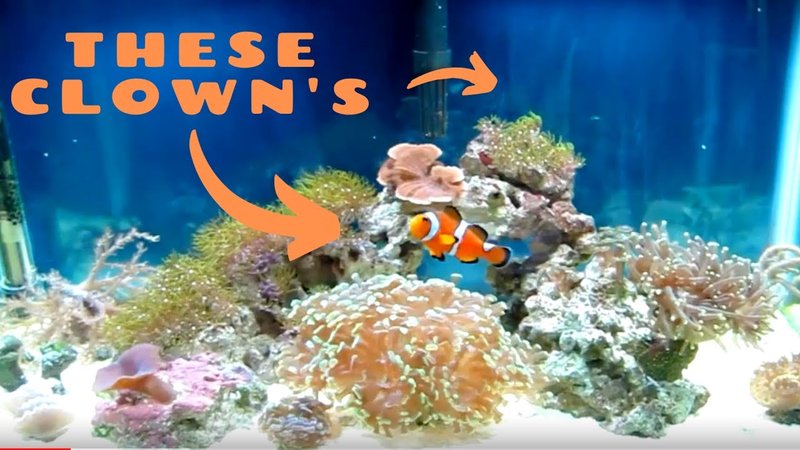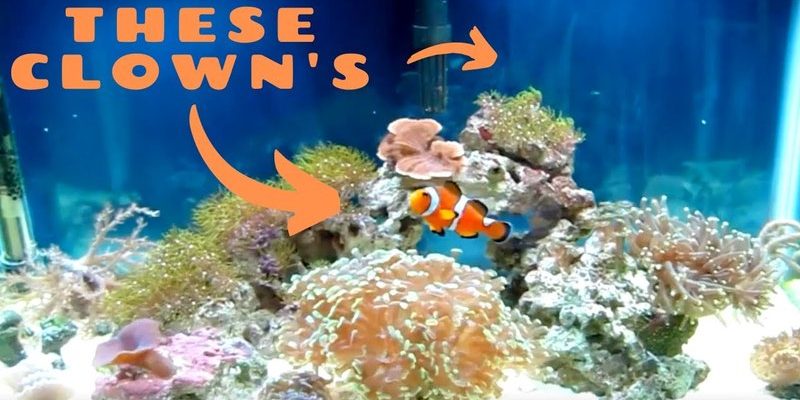
Clownfish are not just pretty faces; they come with their own set of needs. Like finding the best snacks for your movie night, choosing the right tank size, maintaining the right salinity, and keeping the temperature just right can make all the difference. Let’s dive into what you need to know!
Understanding Tank Size for Clownfish
When it comes to clownfish, size truly matters. These little guys typically prefer to swim around in a tank that’s at least 20 gallons. That might sound a bit big if you’re just starting, but here’s the thing: clownfish are active swimmers! A larger tank gives them space to explore and reduces stress. Think of it like a big playground rather than a cramped room.
If you’re planning to keep more than one clownfish, you’ll want to bump that tank size up. Clownfish are social creatures, and it’s perfectly fine for them to live together—just keep in mind that having more fish means they need more space. A 30-gallon tank is a great option if you want a small group. Plus, larger tanks are easier to maintain, providing a more stable environment.
Another consideration is filtration. A good filter helps keep the water clean, and this is especially important in smaller tanks. Overcrowding can quickly lead to poor water quality, so always stay mindful of how many fish you’re adding to your tank!
Salinity Levels: Keeping It Just Right
Salinity might sound a bit technical, but it’s simply a measure of how salty your tank water is. For clownfish, the ideal salinity level is between 1.020 and 1.025 specific gravity. Just like Goldilocks, clownfish like it “just right.” Too salty, and they can become stressed; too little, and it can lead to health issues.
To maintain these salinity levels, you’ll need a good hydrometer or refractometer. These handy tools help you measure the salinity accurately, so you can make necessary adjustments. It’s a little like checking the temperatures of your baked goods—too much or too little can ruin the dish.
Changing the water regularly can also help manage salinity levels. Perform partial water changes—around 10-15% weekly—to keep everything balanced. Don’t forget to use saltwater mix designed for marine aquariums to help maintain that perfect salinity!
Temperature Requirements for Clownfish
Temperature plays a vital role in keeping your clownfish happy. Ideally, you should maintain the water temperature between 75°F and 82°F (about 24°C to 28°C). Keeping the temperature stable is crucial because sudden changes can stress your fish out. Think about it: would you like to suddenly go from a warm beach day to a freezing winter storm? Your clownfish definitely wouldn’t!
Using a reliable aquarium heater is key. Pick one that is suitable for your tank size, and check the temperature regularly with a thermometer. It’s not just about reaching the right temperature, but staying there consistently. If your tank temperature fluctuates too much, consider a heater with an automatic shut-off feature.
If you live in a cooler climate, you might also need to invest in insulation or blankets for your tank during the colder months. A little extra effort can go a long way in keeping your clownfish cozy.
Creating the Perfect Aquascape
Now that we’ve covered the essentials of tank size, salinity, and temperature, let’s talk about aquascaping. This is an exciting part because it involves creating a beautiful environment for your clownfish and other marine life. Clownfish love anemones, which provide safety and a place to hide. If you’re unable to keep live anemones, don’t worry! They’re perfectly happy with other decorations like caves and rocky structures.
When setting up your aquascape:
- Use live rock to create a natural habitat.
- Arrange your decorations with plenty of hiding spots.
- Avoid sharp edges; clownfish are curious and can get hurt while exploring.
Check on the stability of your structures regularly, too. Over time, they could shift around, especially if your clownfish like to swim a bit recklessly!
Feeding Your Clownfish: Nutrition Matters
Feeding your clownfish is another important factor in their care. Clownfish are omnivores, which means they need a balanced diet. A mix of high-quality pellets, flakes, and frozen foods works well. Think of it like a diverse menu—variety is key to keeping things interesting and ensuring they get all the nutrients they need.
Aim to feed them twice a day, but be cautious not to overfeed. Just a pinch of food that they can finish in a couple of minutes is ideal. Overfeeding can lead to water quality issues, which is the last thing you want.
It’s also important to observe their eating habits. They should show enthusiasm for food, and if they start to lose interest, it could mean a problem with water quality or health.
Common Mistakes to Avoid
Even seasoned aquarium keepers can make mistakes. Here are a few common ones to help you avoid hiccups in your clownfish journey:
- Ignoring Water Quality: Always test your water parameters regularly.
- Overcrowding: Stick to the recommended tank size to keep stress levels low.
- Skipping Acclimation: Introduce your clownfish gradually to prevent shock from sudden changes.
By keeping these tips in mind, you can ensure your clownfish thrive in their new home!
Wrapping Up: Your Clownfish Adventure Awaits!
Setting up a tank for clownfish might seem daunting at first, but with a little knowledge and preparation, you’ll create a thriving environment for these delightful fish. Remember to focus on the essentials like tank size, salinity, and temperature. With the right care, your clownfish will not only survive but flourish, bringing a splash of color and joy to your underwater world.
So gather your supplies, sketch out your aquascape, and prepare for the delightful adventure of clownfish keeping. You’re not just setting up a tank; you’re creating a vibrant ecosystem that will bring life and joy for years to come. Happy fishkeeping!

